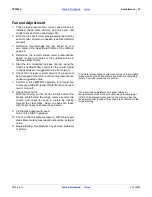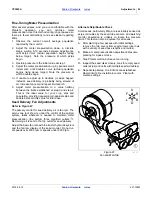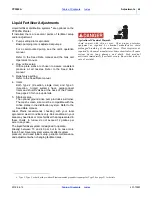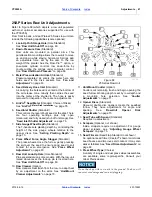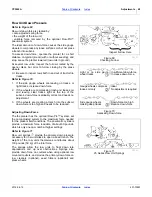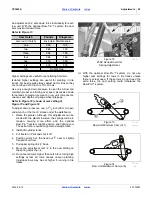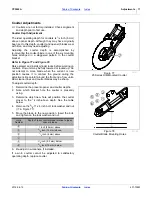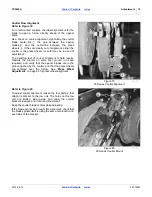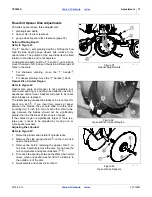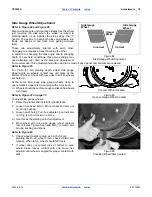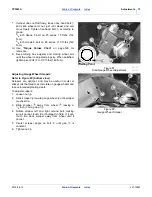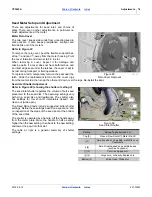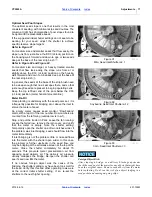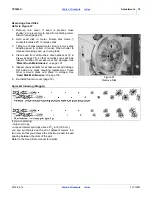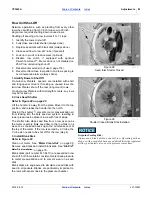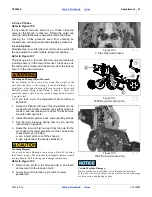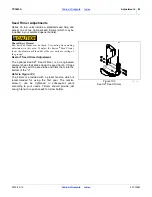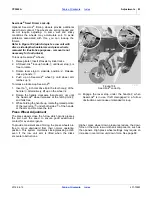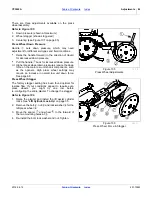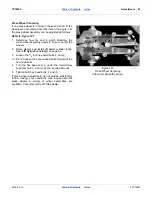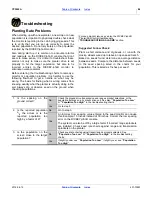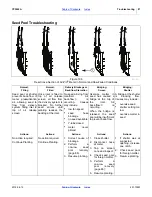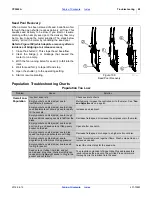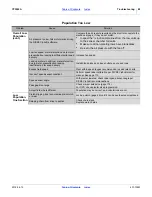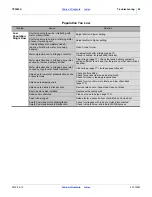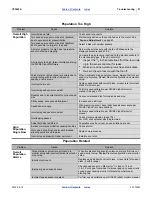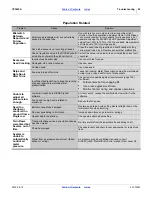
YP3025A
Adjustments
77
2019-06-12
401-705M
Optimal Seed Pool Slopes
The optimal seed slope is one that results in the most
consistent seeding, with minimal skips and doubles. The
column at right has photographs of pool slopes found to
be optimal for representative seeds.
If the suggested initial shutter settings do not seem to be
working for your seed, adjust the shutter to achieve
specific reserve slope targets.
For medium size and smaller seeds that flow easily, the
slope runs from just above the 8:00 (o’clock) position on
the housing wall, forward and down to one or two seeds
deep at the base of the rear strip brush
.
Refer to Figure 92 and Figure 93
For medium size and larger, or heavily treated smaller
seeds that flow less easily, the slope runs from at or
slightly above the 8:30 (o’clock) position on the housing
wall, forward and down to 3-6 seeds deep at the base of
the rear strip brush
.
In general, the seeds at the base of the strip brush need
to be deep enough that no air escapes there, and so that
just enough seeds are present to begin populating cells.
Keep the top left/rear end of the pool below the 9:00
(o’clock) position (meter horizontal center-line).
Meter Re-Fill
Once planting is underway with the seed pools set, it is
infrequently possible for bridging at or above the inlet to
starve the meter of seed.
An empty meter causes seed monitor “Row Failure”
alarm, with a report of the row number. Row numbers are
counted from the left wing (outside row is row 1).
Stop, and put the tractor in Park. Leave the fan running.
Locate the failed row, remove the rain cover, and verify
that the meter is empty. Note the shutter setting.
Temporarily open the shutter one of two notches wider. if
the problem was inlet bridging, seed should flow into the
meter immediately.
If inlet bridging is not the problem, little or no seed flows
into the meter with the shutter open wider. In this case,
the problem is further upstream in the seed flow, and
may be bridging at the air release screen at the top of the
meter. Close the shutter completely for about 15
seconds. This prevents meter pressurization air from
opposing seed delivery air. The delivery air pressure
usually collapses the bridge. Re-open the shutter and
see if seed now fills the meter.
If no obvious foreign object was the cause of the
bridging, the shutter setting may have been too small for
the seed. Verify that this and other operating rows were
at the correct initial shutter setting. If so, re-set the
shutters to the next higher opening.
Figure 91
Milo: Seed Inlet Shutter at: 1
29602
1
8:00
Figure 92
Soybeans: Seed Inlet Shutter at: 2
29604
8:30
Foreign Object Risk:
After clearing a bridge, or a delivery blockage upstream,
check the seed pool at the meter for any debris that might have
been the original cause. Remove such debris from the meter
before planting. Don’t run the risk of an object lodging in a
seed pocket and causing on-going skips.
Figure 93
Corn: Seed Inlet Shutter at: 3
29603
8:30

